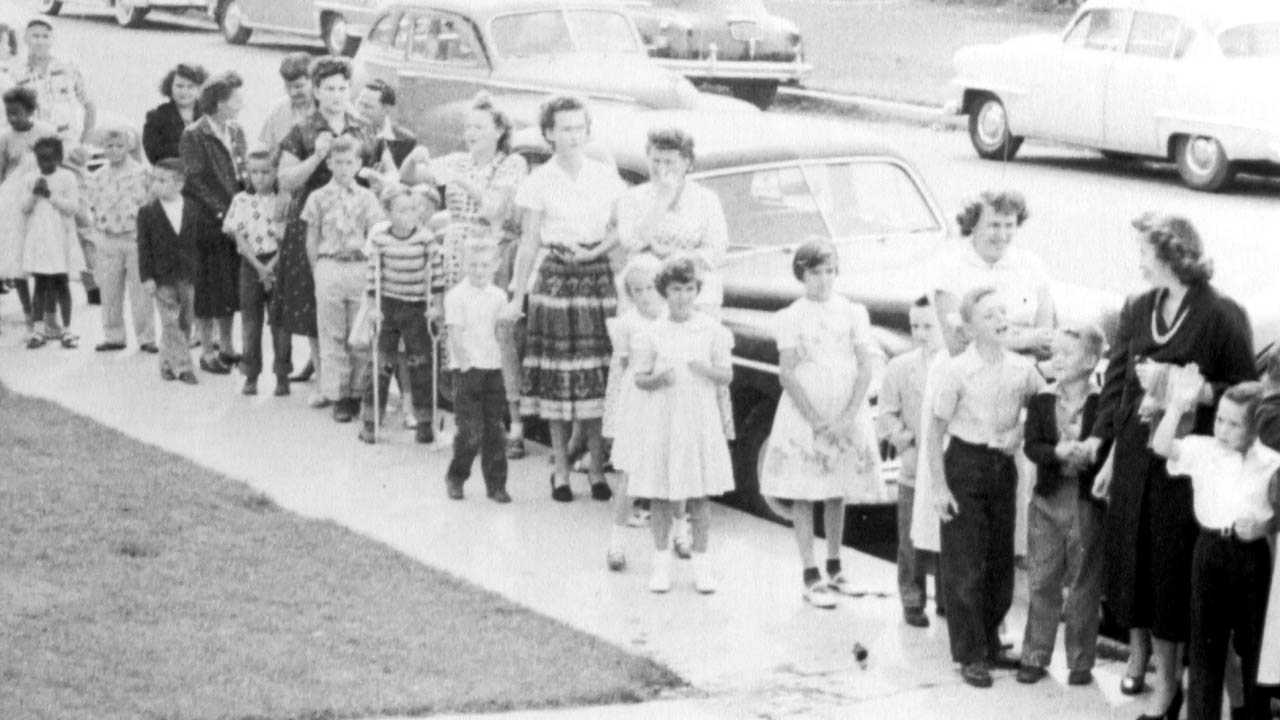PolioPoliomyelitis

Few diseases frightened parents more in the early part of the 20th century than polio. Polio struck in the warm summer months, sweeping through towns in epidemics every few years. Though most people recovered quickly from polio, some suffered temporary or permanent paralysis and even death. Many polio survivors were disabled for life. They were a visible, painful reminder to society of the enormous toll this disease took on young lives.
Polio is the common name for poliomyelitis, which comes from the Greek words for gray and marrow, referring to the spinal cord, and the suffix –itis, meaning inflammation. Poliomyelitis, shortened, became polio. For a time, polio was called infantile paralysis, though it did not affect only the young.
Symptoms and Causative Agent
Polio is caused by one of three types of poliovirus, which are members of the Enterovirus genus.
In about 95% of all polio cases, the person has no symptoms. These are known as asymptomatic cases. The rest of polio cases can be divided into three types: abortive polio, non-paralytic polio, and paralytic polio.
Abortive polio: In these cases, polio is a mild illness, with viral-like symptoms such as fever, fatigue, headache, sore throat, nausea, and diarrhea.
Non-paralytic polio: These cases typically involve the symptoms of abortive polio, with additional neurological symptoms, such as sensitivity to light and neck stiffness.
Paralytic polio: The first signs of paralytic polio, after an initial period of viral-like symptoms, typically begin with loss of superficial reflexes and muscle pain or spasms. Paralysis, usually asymmetric, follows. Fewer than 1%-2% of people who contract polio become paralyzed. In most cases of paralytic polio, the patient recovers completely. However, lifelong paralysis or muscle weakness remains for many people.
Transmission
Polio is a highly infectious illness that spreads through contact between people, via nasal and oral secretions, and through contact with contaminated feces. Poliovirus enters the body through the mouth, multiplying along the way to the digestive tract, where it further multiplies.
Treatment and Care
Polio has no cure, so prevention is the most effective means to combat it. Certain drugs and therapies can offer supportive care for patients to counter some of the effects of muscle involvement. Patients who progress to paralysis of muscles involved in breathing receive artificial breathing support, which may be discontinued if the patient regains use of the affected muscles.
Complications
In severe cases of paralytic polio, the throat and chest may be paralyzed. Death may result if the patient does not receive artificial breathing support. Between 2%-5% of children affected with paralytic polio die, while for adults, 15%-30% die.
Available Vaccines and Vaccination Campaigns
Because of widespread vaccination, polio was eliminated from the Western Hemisphere in 1994. Today, it continues to circulate in a handful of countries, with occasional spread to neighboring countries. (Endemic countries are Afghanistan, Nigeria, and Pakistan as of the end of 2017.) Vigorous vaccination programs are being conducted to eliminate these last pockets. Polio vaccination is still recommended worldwide because of the risk of imported cases.
U.S. Vaccination Recommendations
In the United States, children are recommended to receive the inactivated polio vaccine at 2 months and 4 months of age, and then twice more before entering elementary school.
Source
- Centers for Disease Control and Prevention. Epidemiology and Prevention of Vaccine-Preventable Diseases. Poliomyelitis. (512 KB). Atkinson, W., Wolfe, S., Hamborsky, J., McIntyre, L., eds. 13th ed. Washington DC: Public Health Foundation, 2015. Accessed 01/25/2018.
Last update 10 April 2022